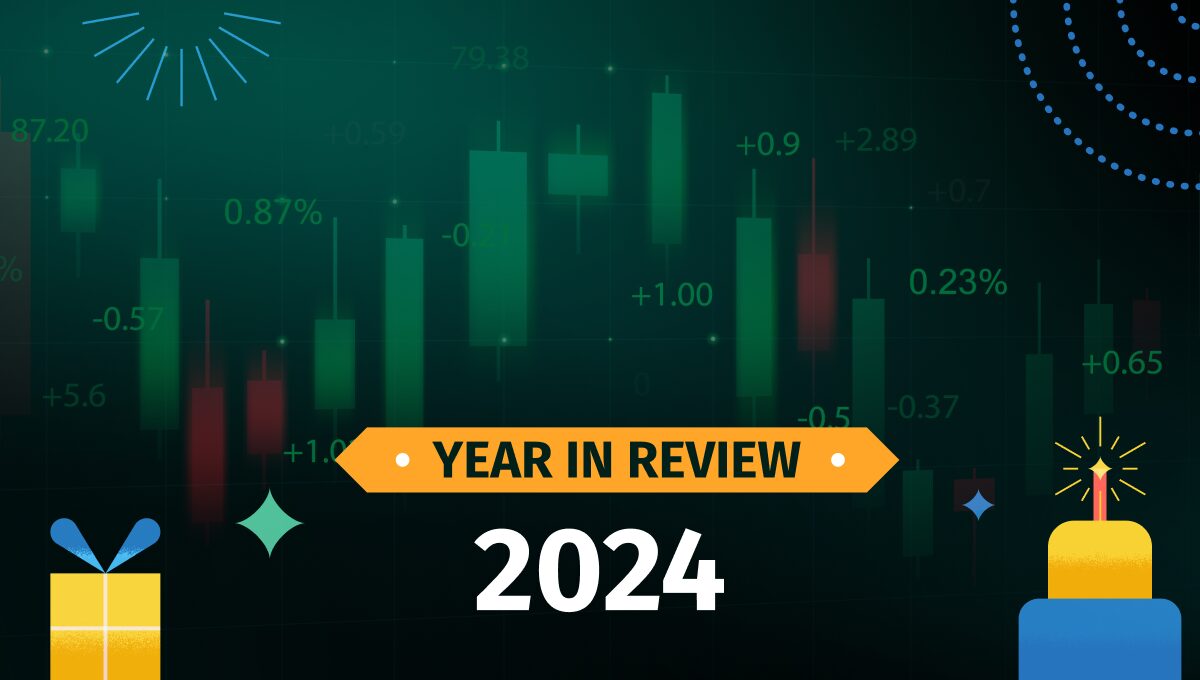Expert Analysis of the Global Macro Events & News affecting the Indian Markets
WEEKLY SYNOPSIS
| Index | 1 Week | 1 Month | 1 Year | 5 Years |
| Nifty 50 | 2.39% | 7.22% | 11.30% | 94.63% |
| BSE Midcap | 2.90% | 9.34% | 32.88% | 137.89% |
| S&P 500 | 0.77% | 4.67% | 14.28% | 73.55% |
| Nasdaq 100 | 0.10% | 4.52% | 32.38% | 139.51% |
GDP Expands 7.6%: Analyzing India’s Stellar Growth
The OECD (Organisation for Economic Co-operation and Development) has cautioned that the world’s leading economies are facing a worsening deceleration due to significantly elevated interest rates, which are negatively impacting economic activity. Although inflation has slightly decreased in Europe, Brazil, and Australia, it still exceeds central bankers’ desired levels.
Despite these challenges, India is outpacing other economies with a remarkable growth rate of 7.6%, showcasing its resilience and potential to thrive amidst global economic uncertainties.
Dive into Data: GDP Growth Rate Forecasts for the Indian Economy
India’s Spectacular 7.6% GDP Growth in Q2
At first glance, India has reported a spectacular 7.6% GDP growth for the recent quarter, surpassing all expectations during a period when global economic recovery remains sluggish. While the 7.6% GDP growth number is certainly impressive on the surface, it is important to examine the data in more detail to understand the real drivers of economic activity.
This high growth rate is partly due to the concept of base effect, as the GDP had contracted by 3.5% in the same quarter last year due to subdued demand and lower workforce participation. As the base period of comparison was very low, the same value of economic activity in rupee terms now translates into a much higher growth rate percentage.
Understanding the Significance of ‘Base Effect’
Base effect is the phenomenon where a lower base or comparison period makes growth appear higher than it actually is. For example, if GDP was ₹100 last year and grew 10% to ₹110 this year, the growth rate would be a healthy 10%.
However, if last year’s GDP was ₹50 and this year it’s ₹60, the growth rate is a whopping 20% despite the same ₹10 increase both times. This base effect is why current growth rates appear higher as the economy has a pandemic period for the base.
Dive into Data: Overall contribution of various sectors in the Indian economy and their weightage in the overall GDP of the country in Q2, FY24.
Reasons Behind a Subdued Quarter for Agriculture
The gross value added (GVA) of agricultural output has registered a significant decrease of 64% since the first quarter of fiscal year 2024 owing to various contributory factors such as :
Declining Crop Yields
- The average yield of rice has reduced by 5% in the past decade
- Pulses production has reduced by 10% between 2016-2020 due to a 15% drop in yields
- Soil fertility has declined in over 50% of areas due to degraded soil health
Rising Input Costs
- Fertilizer prices have increased by 30-40% since 2020
- Diesel prices are up by 25% affecting 80% of farm operations
Labour Shortages
- Timely operations are delayed impacting 20% of the crop area
- Wages have increased by 15-20% but productivity has reduced by 7-10%
- This problem is expected to affect 50% of agricultural production in the coming years
Whopping 13.9% Growth in Manufacturing
The Indian manufacturing sector encompasses many important sub-sections. Within this large and diverse industry, there are key areas like mining, textiles, pharmaceuticals, automobiles, and electronics. All of these sub-sectors play a vital role in India’s manufacturing strength and contribute significantly to the country’s economic growth and development.
Dive into Data: Contribution of various industries in the overall manufacturing sector’s output in India’s GDP
(Source: ResearchGate, Year: 2021)
As one of the major employment generators, it can significantly impact industrial production and exports. Strong growth in factory output bodes well for the overall development of the manufacturing segment, which is a key pillar supporting India’s economic growth.
The manufacturing sector plays a vital role in India’s economy, contributing around 15% to the country’s Gross Domestic Product (GDP) according to the latest data by the Press Information Bureau for Q2 of 2023-2024.
The manufacturing sector grew a massive 13.9% during Q2 of the financial year 2023-24, reflecting a strong rebound from muted activity levels last year. However, the 13.9% growth in manufacturing needs to be analyzed in the context that the sector had actually contracted 3.8% last year. This means the large increase is coming off a low base. The output has recovered but is still below pre-pandemic levels, highlighting lingering challenges.
The Construction and Infra-Growth Forces
Many corporate sectors benefited significantly from the rise in economic activity in recent times. Construction materials companies such as cement manufacturers witnessed substantial growth in profits owing to higher sales volumes resulting from government spending on infrastructure development projects and increased residential construction activities across both rural and urban areas.
At the same time, declining price pressures on key inputs helped boost profitability margins for many corporations. The moderation in commodity prices especially metals, plastics, and fuel eased cost burdens. Additionally, the government’s thrust on building infrastructure, the pickup in private capital expenditure, and increasing digitization aided investment sentiment within the industry. These factors combined to drive a broad-based recovery in the corporate sector performance.
Private Consumption Growth, Easy Credit, and Economic Dynamics
Consumption is a key driver of India’s economic growth. The country’s GDP is calculated using the expenditure method, which means private consumption has a weightage of 61% in the overall GVA calculation of the country’s GDP in the second quarter of FY24. When individuals spend more, it directly boosts the overall GDP figure.
The 3.5% QoQ growth in private consumption in the latest quarter was supported by easy credit availability, and sustaining spending levels. The relationship between credit and consumption is significant, as accessible credit can boost consumer spending, driving economic activity.
Dive into Data: Market Share of Banks in the Credit Card Segment in India
A combination of stagnant incomes, rising costs, and easy availability of credit is resulting in many Indians spending beyond their means and relying on credit cards for regular expenses. With credit cards and buy now pay later schemes proliferating, total credit card debt outstanding has risen sharply to over Rs. 2.13 lakh crore as of July 2023, marking a growth of 31.2% from the previous year. However, this rapid growth in unsecured debt poses significant economic risks if left unaddressed.
India recently overtook the UK to become the world’s fifth-largest economy. Our GDP stands at $3.7 billion and Income Per Capita at $2,389. According to the current levels of annual growth projections, the Indian economy could touch $29 trillion towards the end of 2047 and surpass economies such as Japan and Germany!
Market Moments with Divam Sharma | Weekly Wrap | Episode 8
In weekly wraps every Saturday at 12 PM, we come live to discuss our favorites – stock markets and the economy.
This Saturday at 12 PM, our CEO and founder, Mr. Divam Sharma will discuss:
– What’s been up with the markets
– Correction in Indian Markets
– Election Euphoria
We have been seeing election euphoria and some correction in the markets at the same time, and this is a bit confusing to understand but that’s exactly what Divam will talk about this week. Tune in to Episode 8 of Market Moments with Divam Sharma and if you have questions about the markets or our smallcases, submit them here and we’ll answer them during the live.
Explore Green Portfolio smallcases here
Liked this story and want to continue receiving interesting content? Watchlist Green Portfolio’s smallcases to receive exclusive and curated stories!
And for all you Green Portfolio subscribers, we’re rolling out Exclusive Perks!

Use Promocode SCMINT30 on Mint Premium’s 1 Year or 2 Year plan to get 30% OFF on your purchase! Offer Valid until 31st December, 2023.
Green Portfolio is a SEBI Registered (SEBI Registration No. INH100008513) Research Analyst Firm. The research and reports express our opinions which we have based upon generally available public information, field research, inferences and deductions through are due diligence and analytical process. To the best our ability and belief, all information contained here is accurate and reliable, and has been obtained from public sources we believe to be accurate and reliable. We make no representation, express or implied, as to the accuracy, timeliness, or completeness of any such information or with regard to the results obtained from its use.






